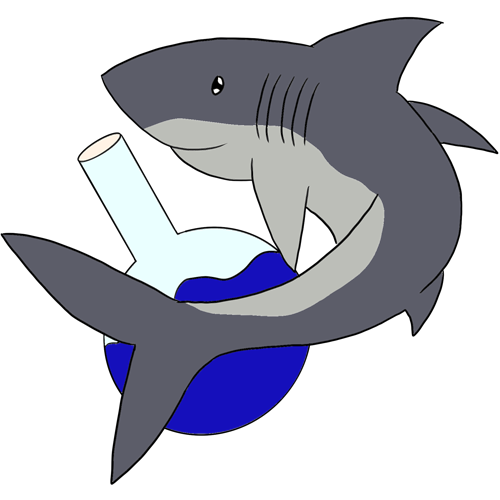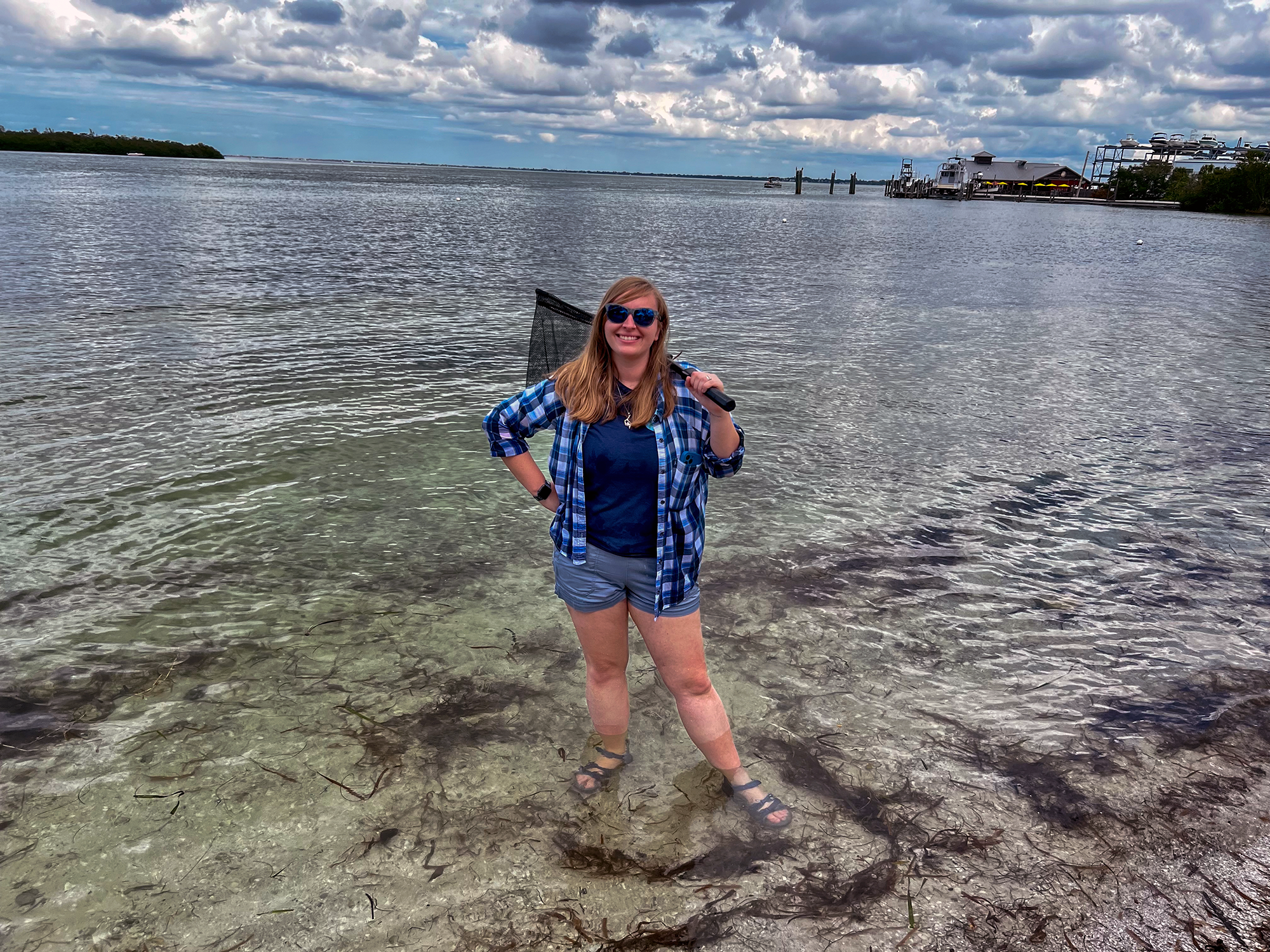“What is an estuary?” I make a point of asking my students this every year in mid-September and typically get a room full of blank stares and some really weird answers. I’ve gotten “where the sewage water is” to “deep, deep, deep, deep sea” and everything in between, but mostly just lots of blank stares. So as National Estuary Week ends, I want to talk about the importance of this amazing and completely underrated ecosystem and some of the ways we can protect and celebrate it.
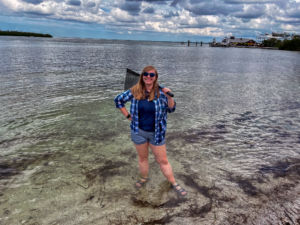
What is an Estuary?
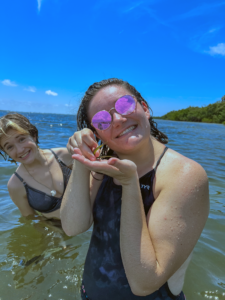
Estuaries are known commonly as “where the river meets the sea”. They are known for their varying degrees of brackish water and the protection it gives to the animals that live in them. While there are many types of estuaries (fjords, drowned river valleys, tectonic, bar built) here on the Gulf Coast we deal in bar-built estuaries. Bar built estuaries are an embayment that is enclosed by land, such as a barrier island, from the open ocean and are fed fresh water from a river source. Locally, we have Sarasota and Tampa Bay that are fed by the Manatee and Hillsbourgh Rivers. In these estuaries you get lots of life from seagrasses to manatees!
Biodiversity in Estuaries
The unique mix of freshwater from rivers and saltwater from the sea creates a brackish environment that’s well known as a “nursery of the sea”. Estuaries are among the most productive ecosystems in the world, supporting a rich diversity of species, including but certainly not limited to:
- Fish: Many fish species rely on estuaries for breeding and as nurseries for their young.
- Birds: Estuaries serve as resting, feeding, and breeding grounds for various bird species, especially migratory birds.
- Mammals: From seals to manatees, many marine mammals are often spotted in estuaries hunting for food or taking shelter.
- Invertebrates: Shrimp, crabs, oysters, and many other invertebrates call estuaries their home.
Benefits of Estuaries
About 70-80% of marine gulf fishes will spend a portion of their life here in the estuaries so your favorite fish to eat even just your favorite fish is probably directly affected by estuary habitats. These fish will lay eggs in and around estuaries to give their young a chance to grow up in the safety of the estuary where large predators don’t typically go and is plentiful with food. Even some shark pups start their lives here like the bonnethead or blacktip shark. Many different birds and invertebrates also live crucial parts of their lives in estuaries.
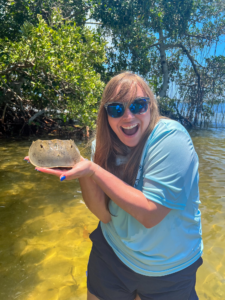
In places like Sarasota and Tampa Bay, some estuaries are filled with seagrass that provides protection and food for many animals as well as protection for our coastlines. Seagrasses and mangroves provide much needed support for our coastlines preventing coastal erosion and protecting from excess storm damage. Mangroves and seagrasses also provide filtration that protects reefs and the rest of the ocean from human made wastes and runoff pollutants, they are also the main contributor to water clarity by trapping excess particles between them giving some bays a crystal-clear view. Our estuaries also give us important things like fishing grounds where many commercial and recreational fishing grounds are, supporting local economies through ecotourism and recreation.
My students started Estuary Week off by participating in the Suncoast Reef and Beach Clean Up in Terra Ceia for International Coastal Cleanup Day. About 12 of my students went tromping through mangroves and seagrass beds gathering up a wide variety of trash from shoes to coolers to even a tire! After collecting trash, we used dip nets to survey the local animal species and even take a few friends back to our classroom aquarium! It was wonderful seeing them so excited for even the smallest animals they caught, like little mud crabs and even the teeniest little seahorse!
In class this week, we learned about the importance and different types of seagrasses and why they are crucial to have in the ecosystem. We discussed and practiced how scientists calculate populations of fish in the wild and simulated how animals hide in the seagrass to get away from predators. These activities helped the students to understand first, how we can calculate a population of animals without counting each individual animal, and secondly how small animals can hide in seagrass and prevent predation from occurring. I loved watching my students get competitive trying to collect as many animals as possible from the seagrass and finding that it was super difficult to find the prey in the bag with seagrass versus the bag without it.
Sarasota Bay Estuary Program threw a fantastic event to close out Estuaries week called Bay Fest! This event showcased many of the facilities and programs around the local counties that connect people to their local estuaries. I spoke with FWC educators, County Volunteer Coordinators, and even Oyster Reef builders giving me some amazing new contacts to help build up new and exciting activities for the Marine Science Club at my school.
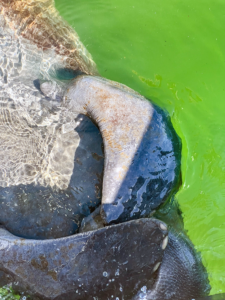

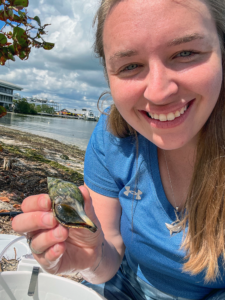
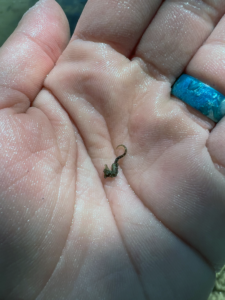
We as humans are damaging these ecosystems through pollution, warming temperatures, even boating is causing scars in the seagrass bed that impact the animals that live there. Living near an estuary it is important to learn what you may be doing to impact the estuary and how you can help prevent damage from occurring. One way is volunteering with your local estuary program and joining a “eyes on seagrass” event to determine the health and population of the local seagrasses. You can also volunteer for beach and reef clean ups to help keep trash from entering the estuary and causing harm to the local animals and seagrasses.
While my time with estuaries in my class isn’t over, I love that there is a week that is centered around what I feel is one of the most important ecosystems on our planet. Let’s do what we can to help maintain our beautiful estuaries for our enjoyment and for the enjoyment of our local animal’s buddies.
